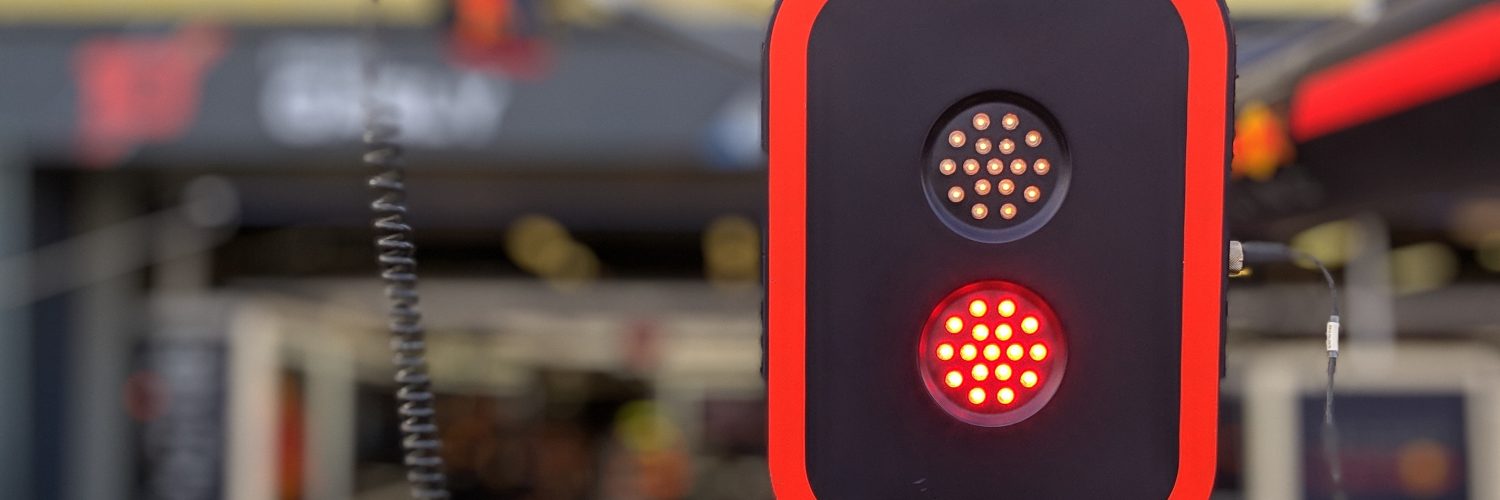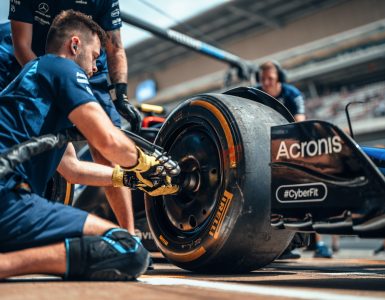Just eight days of pre-season testing were conducted at the Circuit de Catalunya near Barcelona ahead of the 2019 F1 season. During this time, we’ve seen the team’s initial interpretations of the heavily revised 2019 rules. Most cars were only lightly modified from their launch or Test 1 specification, with only Mercedes bringing a major update by producing an almost entirely new aero package on the W10. Testing laptimes are always hard to gauge due to the tyres, fuel loads and run schedules – some teams clearly showing their hand with their outright pace on short runs, others working more diligently on data gathering to underwrite future development work.
With this detail analysed below and ahead of the first race, this gives us a baseline from which to assess the car’s in-season development, which will be covered race-by-race here at Motorsport.tech
Mercedes-AMG Petronas Motorsport
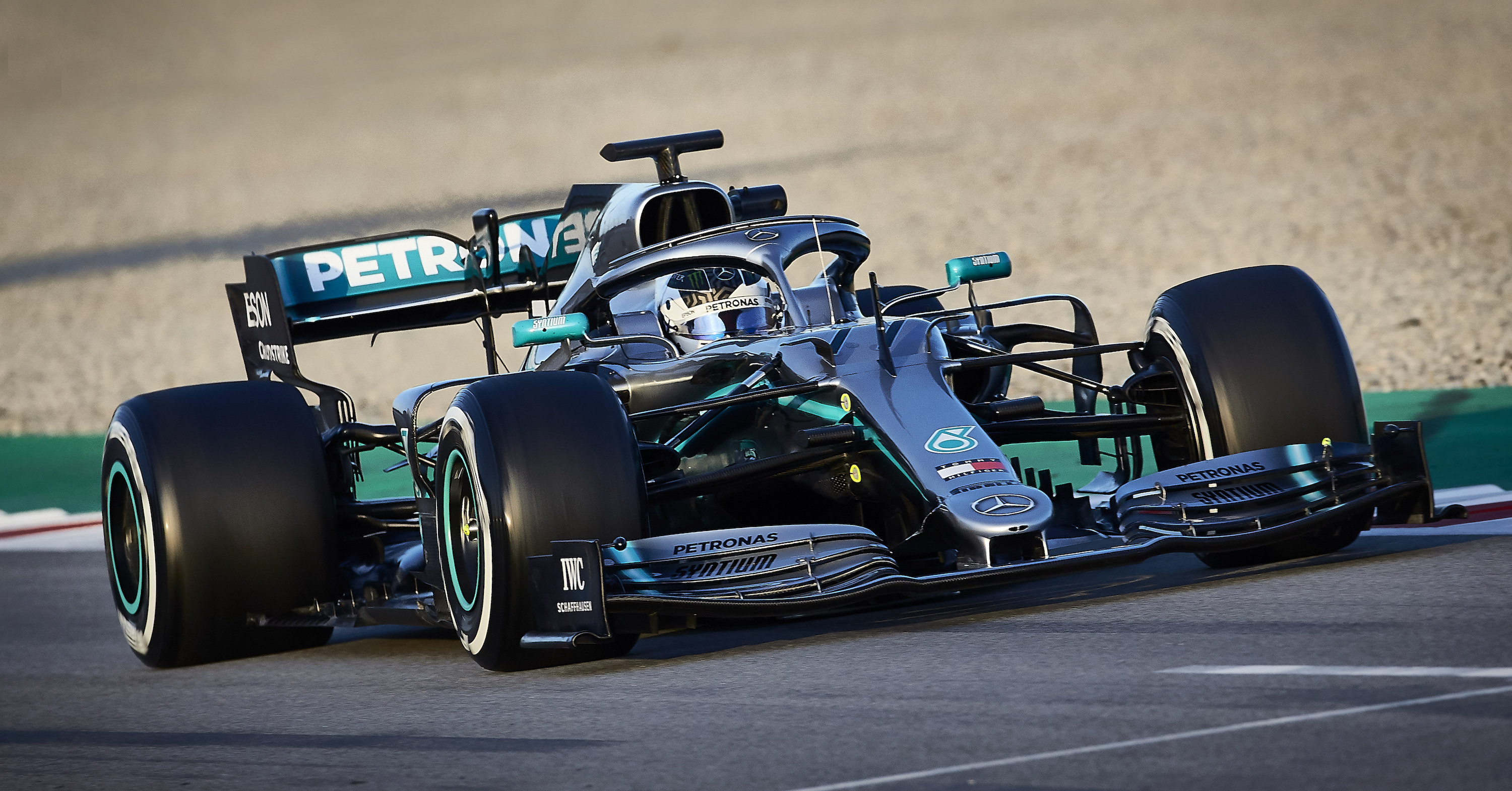
Throughout the first test, Mercedes struggled with the car’s balance. It is suffering understeer, especially at high speed. Some pondered if the regulations had tripped up Mercedes’ cycle of dominance, but the aero package on the W10 was only ever an interim set up. This was evident when the car appeared at the second test, with a completely new and very different set of bodywork. Again, there was speculation that this was a reaction to the issues in the first test, even that the car may run throughout the season choosing between the two aero packages, but this was wild speculation. It was always Mercedes’ intent to run with the more definitive V2.0 package at Test2 and its design and production was scheduled long in advance of the first test.
While the major update didn’t wholly solve the balance issues, the car was much improved and when drained of some fuel was able to lap near the Ferrari’s times towards the end of the test. Meanwhile, rumours and analysis suggest the Mercedes Power Unit may not have made the same step up in power over the winter as Ferrari. Despite there being potential alarm bells, Mercedes has not gone for glory with its test routine in previous years, focussing on long runs and reliability rather than qualifying simulations. Equally, there’s a history that the car has always looked like it needed a fine tune on its set up and care being was taken with the engine’s party modes through tests. Mercedes strongest card has been its ability to engineer a car into a dominant position throughout the season, this year should not necessarily be any different.
This major V2.0 aero package is literally and end to end update of the car, from nose tip to diffuser. Starting with the aforesaid nose tip, this is refined in its shape, with a pronounced bulb to the tip, to allow the airflow towards the leading edge of the under the nose ‘cape’ vane. Behind this, the nose retains its slim rounded shape, typical of Mercedes’ recent designs. Despite the bulk of the nose appearing similar, the changes probably required a new crash test to accommodate the change on the frontal section, which forms both the minimum cross-sectional areas and fulfils the initial deceleration required in the frontal crash tests.
Not actually part of the nose, but the vanity panel fitted just behind it, Mercedes have added two “L” shaped vanes. These aren’t something new in F1 and have been seen as far back as 2006 on the Renaults. They actually create a little lift, which is the reverse of downforce! Their use is to create downwash, by turning the upwash over the front of the car downwards, they are just the first of a series of downwash devices Mercedes have added to the V2.0 package. The loss in front end downforce is offset by the better aero efficiency created at the rear. Sauber have fitted more extreme versions of the same device, these remain legal as they sit below the maximum height for the front of the chassis, an area largely unexploited in recent years.
The front wing itself also appears similar to the V1.0 bodywork, with the obvious change being to the endplate. The rear part of the endplate loses the much talked about inward leaning endplate shape as seen in Test1. Now there is a simpler outswept endplate, with a notch cut out of the rear upper corner. This is in line with what a lot of the teams with full width wings are doing. The notch releases the air flowing off the wing tip a little earlier and a little lower, to counteract the turbulence spilling off the front tyre.
As has been Mercedes’ trademark for over three seasons, there are incredibly complex bargeboards and the V2.0 package goes even further in this area. While the main vanes and lower paraphernalia are more complicated than ever, the stand out change in this area are the downswept vanes fitted to the side of the chassis. These work with the sidepod fronts, taking the air rising up over the front of the car and turning it into downwash towards the sidepod undercuts. Following the path of the vanes literally shows where they are trying to turn the airflow.
Similar effects are achieved with the front section of bargeboard, that curves over the join side of the chassis and the winglet jutting out slightly further back from that area. Both have wing profiles pointed tail down to create downwash. The theory is that more airflow is directed lower around the sidepods and goes over the floor/diffuser for more downforce.
Relatively unchanged are the sidepod fronts retaining the low/deep inlet and narrow sidepod, but the volume behind the inlet has been reshaped considerably. It’s likely that the radiators within the sidepod are unchanged from the V1.0 set up, but the sidepod tops now slope downwards much more aggressively over the radiators, again to produce downwash over the rear of the floor in a similar fashion to Red Bull’s concept.
Helping the outwash of the front wing and the effectiveness of the underfloor aerodynamics is a new floor edge treatment. The long exposed side of the floor is fully slotted, the shape and angle of the slots vary along its length to help divert some airflow out from under the sidepod’s leading edge, then with the longer slots along the floor periphery create more outwash to keep the front tyre wake away from the coke bottle area and push it out around the rear tyre. Helping this effect are new vertical vanes, copied from Ferrari, fitted in two pairs of three along the floor, which further aid the redirection of the airflow outward.
Contrary to popular belief, these longitudinal slots are not used to create a sealing effect, or fluid skirt, along the floor’s open edge. This was a technique used in the distant past, but the inwash/outwash airflows along this area are far better understood and controlled nowadays.
Along the car’s centreline more work has been done on the Halo aerodynamic add-ons, the boomerang shaped vane being used to divert airflow more cleanly into the roll hoop inlet and the flattened side used to streamline airflow along the flanks of the engine cover.
At the tail of the engine cover is a new two element T-wing. While these were notionally banned for 2018, some space is still allowed from them. They are likely to be far more commonplace in 2019, as the repositioned top rear wing is now in better position relative to them to gain benefit from them.
Even with this major package, the car can still be expected to have updates fitted for Melbourne, so this is just the start of the season long development process.
Scuderia Ferrari

Another year has seen Ferrari well prepared through the winter testing process. Perhaps this is even more obvious this year, as the SF90 has topped the time sheets over its rival Mercedes. This bodes well for a more competitive championship this year, but by no means secures the Italians any prizes. Expectations must be tempered by recent experience, where Ferrari’s technical team’s failure to get the car to qualify well and struggle with a full season of development on both aero and tyre management, which has cost the team consistency and thus titles. Its progress this winter has no doubt been bolstered by Technical director Matteo Binotto’s step up to become team principal, but this role brings its own pressures that may detract from his ability to lead the technical team so effectively through the season.
Throughout testing, the SF90 has been quick and balanced, this latter aspect being stark counterpoint to the Mercedes handling. Equally, Ferrari appear to have found a reasonable step in performance with the repackaged power unit over the winter. Such harmony is working in their favour going into the opening races, setting us up for great battle in the first part of the season.
Through testing, Ferrari’s car has seen few updates, the car appearing immediately with the innovative tapering front wing design and otherwise well-developed aero parts. The biggest technical change was to the exhaust package, where the stacked three-pipe arrangement from the launch spec car, was simplified to just a two-pipe set up.
F1’s rules demand separate pipes for the turbocharger and wastegates. This change being not for any performance gain but the initially quiet 2014 power unit’s single outlet exhausts, were found to have a silencing effect from the short wastegate pipes entering the main pipe. Thus, separating the pipes made the exhaust note a little louder.
Even if F1 cars might only have one wastegate to control the over-boost produced by the turbo, when the MGUH isn’t achieving the same by recovering energy from it, teams prefer to package two pipes into the rear end. Ferrari runs a single wastegate but has split the single outlet into two pipes up until this new set up. Even the three-pipe launch arrangement had one wastegate pipe before a rudimentary “T” split just before the final 100mm of tail pipe, formed the third outlet. The new arrangement simply removed the “T” junction and continues with a stacked two-pipe set up. There’s no obvious impact on engine performance. The wastegate is rarely opened, but some situations do call for the wastegate to be operated to control boost. The main gain is simpler packaging, with a slimmer rear end and slightly less weight.
Aston Martin Red Bull Racing
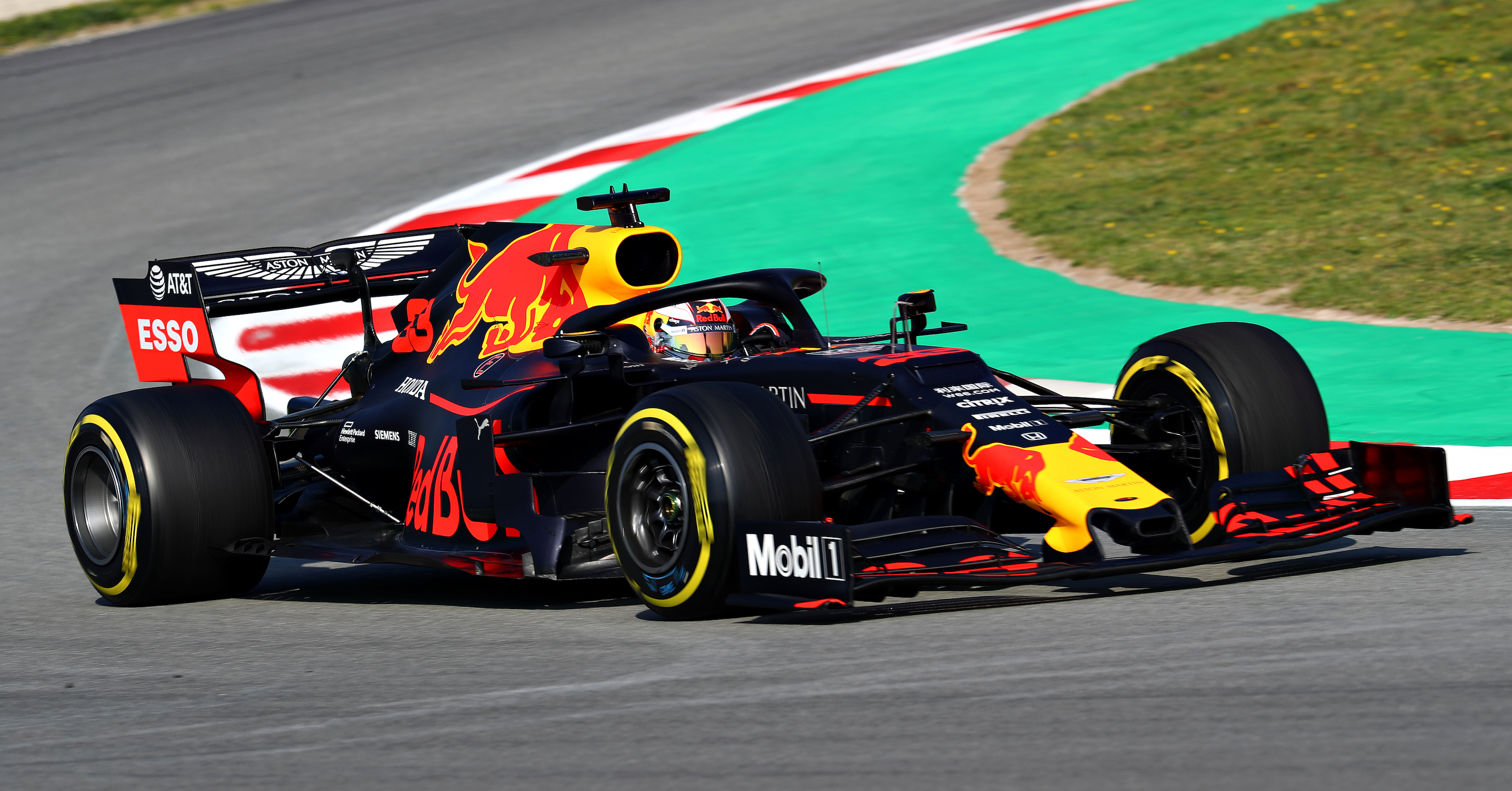
So far, it’s hard to gauge where Red Bull lies in this year’s championship but the RB15 is clearly a good car and its Honda engine is working well so far. Perhaps the least that can be said is that they are consolidating in their position as the third top team and that the Honda engine isn’t proving to be a performance handicap in any way. But already there is talk of the Honda engine needing packaging changes. Although undetailed, these changes are a potential worry, but not so significant that they are obvious already. Likewise, chassis updates planned for China are being pushed through a month early to be ready for Melbourne.
Updates through testing were as limited as Ferrari’s – no real significant changes in concept were seen, mainly detail changes to floor and aspects of the sidepod\bargeboard vanes.
A direction most teams will no doubt follow, Red Bull added the Ferrari-style floor slot vanes in the second test. As already detailed with Mercedes, these vanes help push the floor edge vortex outboard of the rear tyre more effectively. In Red Bull’s case, there were three sets of vanes spaced along the floor’s edge, a pair of two, followed by another pair of two and then a set of three nearest the rear tyre. These fins are legal, as long as they’re not too high. There’s a rule going back to 2009 that demands anything 50mm above the floor must meet certain radius and tangential rules, so these fins will all be of a uniform maximum height.
Leading on to the floor edge was a new package of vanes attached to the sidepod and bargeboard, no doubt linked to the floor edge treatment and potentially other unseen changes to the floor downstream. The launch car had an “S” shaped panel lowdown at the start of the floor. This has been swapped for two separate and more complex vanes, each larger and overlapping one another. These will set the airflow up ahead of the floor’s edge, hence the relation to the floor changes downstream.
Renault F1 Team
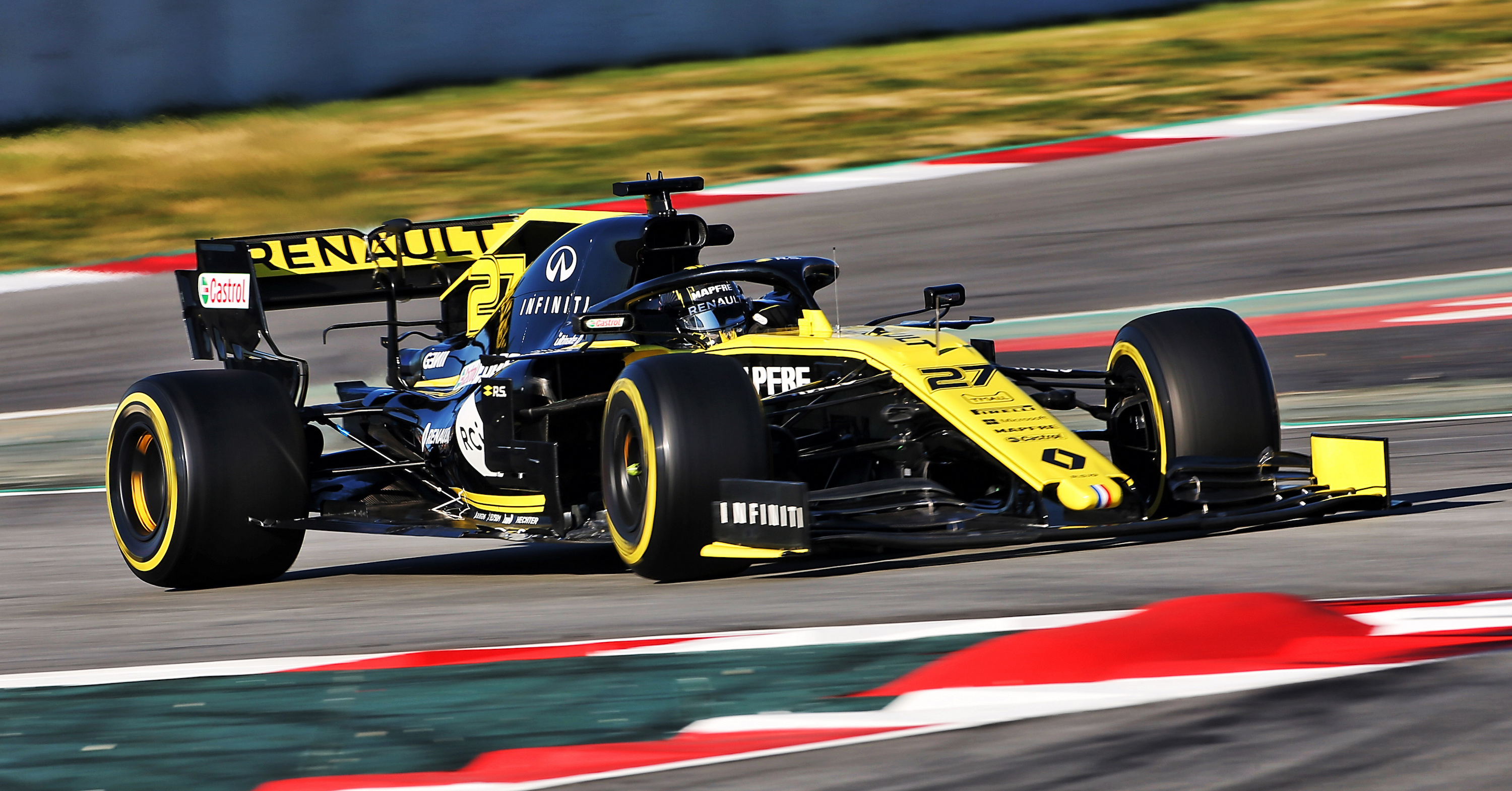
There remains the same tight midfield battle as in 2018, with some suggesting that the gap to the leaders has diminished over the winter. There is still a gap to the top three teams, but Renault are one of the favourites to maintain its place at the front of the midfield now as the de-facto factory team and with less interference from its relationship with Red Bull, there’s a sense of more commitment from the manufacturer over the winter. Although issues with the Carlos Ghosn may subsequently affect the manufacturers level of financial commitment to F1.
Testing produced strong laptimes from the RS19, but a lot of time on the run sheet was dedicated to technical work with the car calibrated for various data gathering exercises. We saw the usual aero rakes plotting air pressure, but Renault also conducted several tests with optical and strain gauge rigs to measure the deflection of the car’s aero surfaces around the lap.
Most notable of these was the nose rig, that had two tall aluminium pillars fitted to the front wing, with cables joined to the wing’s endplates. This was run in conjunction with strain gauges in the cables and optical equipment focussing on spots stuck on the white painted wing surfaces. Both the strain gauge and movement detected from the optical sensors will tell Renault if the movement of the wing was in line with their predictions. Clearly if the wing deflects underload in anyway different to predictions, then the aero surfaces are pointed in a different way to expectations and thus create potentially a very different airflow.
Similar runs were set up with the rear wing, the tell-tale white paint and black dots being used as reference points for the optical sensors.
Actual updates to the car were less easy to spot, a small horizontal fin added to the front wing endplate was initially puzzling as it would be illegal in that position, but it turned out to be the mounting for the tyre temperature camera, which is allowed within the rules.
Rich Energy Haas F1 Team
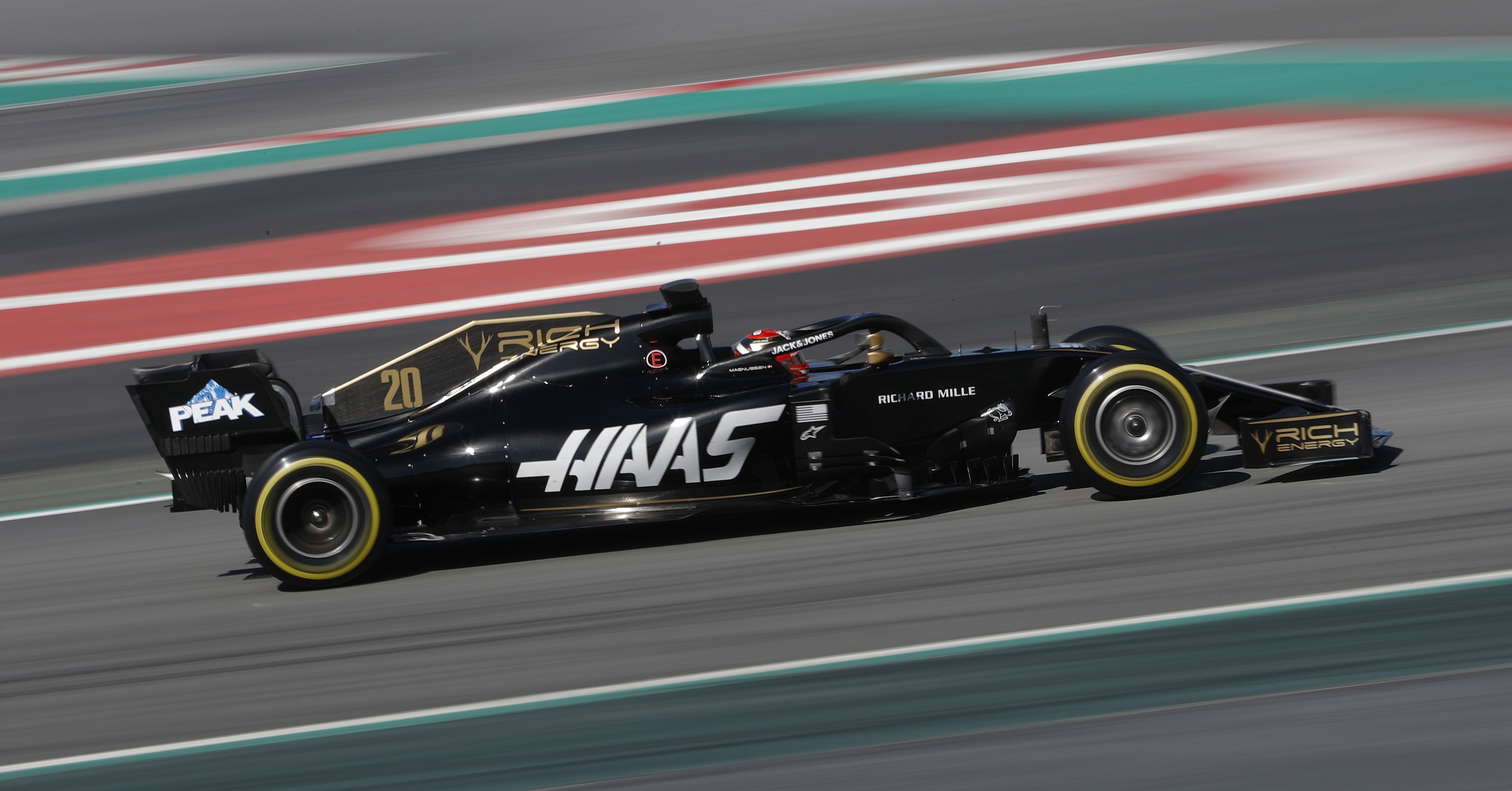
Again, with the momentum of 2018 behind them, Haas remain strong contenders to be at the front of the midfield after testing. Its unique approach to F1, taking most of the mechanical parts from Ferrari as well as the full powertrain, Haas always has a jump start to its season. It can be focussing on the aero and set up work whilst others are bedding in their newly designed components.
Little obvious has changed to the VF19 through testing. It followed its supplier Ferrari in adopting the two-pipe exhaust set up.
Red Bull Honda Toro Rosso
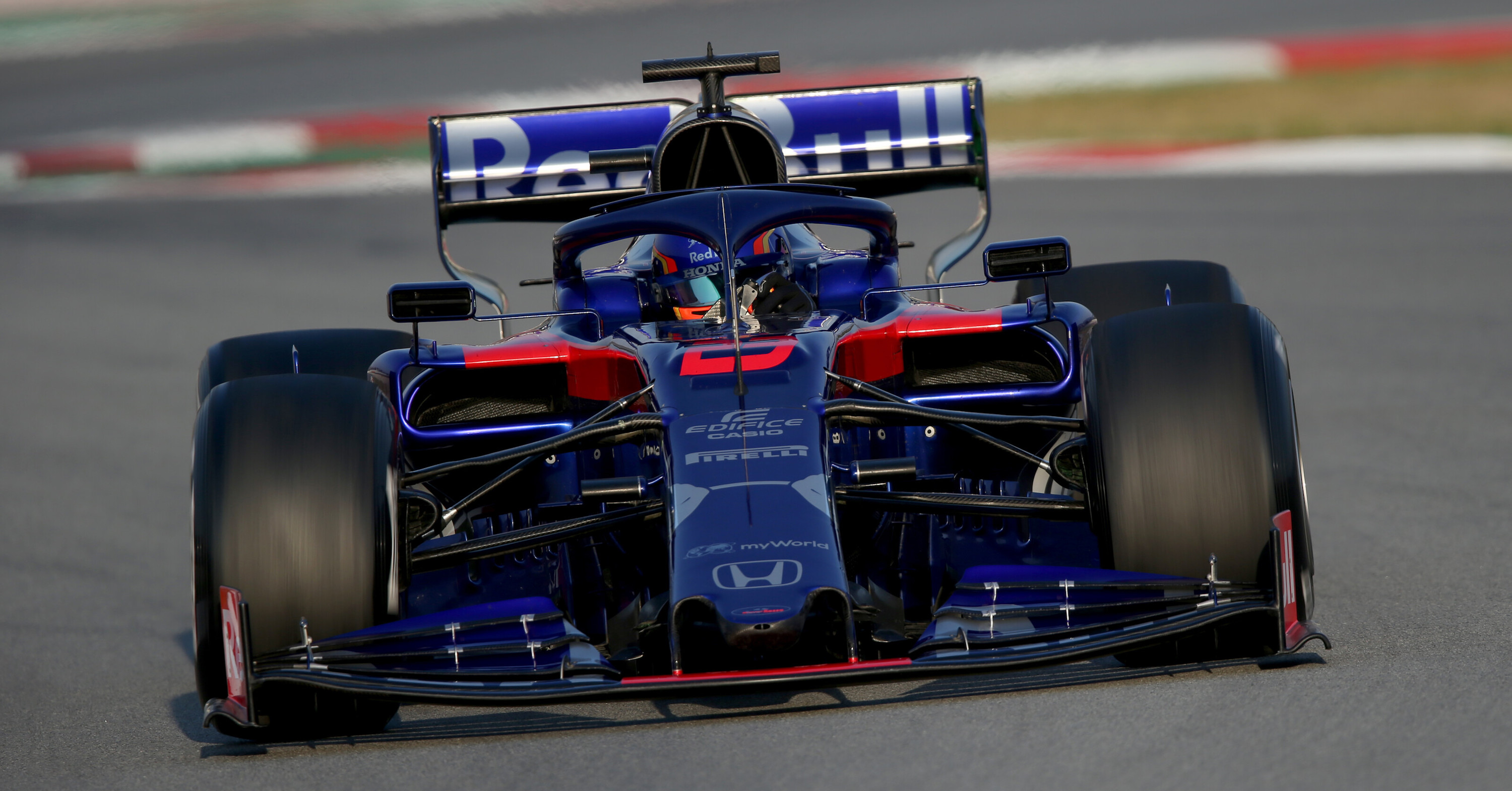
In its second year with Honda and with greater input from parent team Red Bull, Toro Rosso came out of testing in a stronger position than in previous years. Despite a team well known for innovative design, the actual performance from the STR chassis has been, by its own admission, relatively weak for the past few seasons. This appears to have stabilised by the changes over the winter and the STR14 is nearer the sharp end than might have been expected.
Closer inspection sees the STR14 differ from the RB15 in many ways and aero development is ongoing. Despite taking the entire rear end from Red Bull, the detail packaging around the gearbox is different. As explained before, the Red Bull gearbox layout is unusual and mounts the differential very high up, the rounded bulge of the crown wheel around the differential can be seen under the raised central exhaust. The rear suspension mounts so high, that the top wishbone actually employs an old Williams trick, to use the rear wing mounting pylons as a connecting point for the rear leg of the wishbone. Red Bull then route the two wastegate pipes under the wishbone, whilst Toro Rosso’s conversely rise them over it.
A small extra fin was trialled on the shoulder of the sidepod bodywork. The black prototype fin, most likely made from a 3D printed material, was briefly fitted and should reappear in fully painted carbon fibre for future races.
McLaren F1 Team
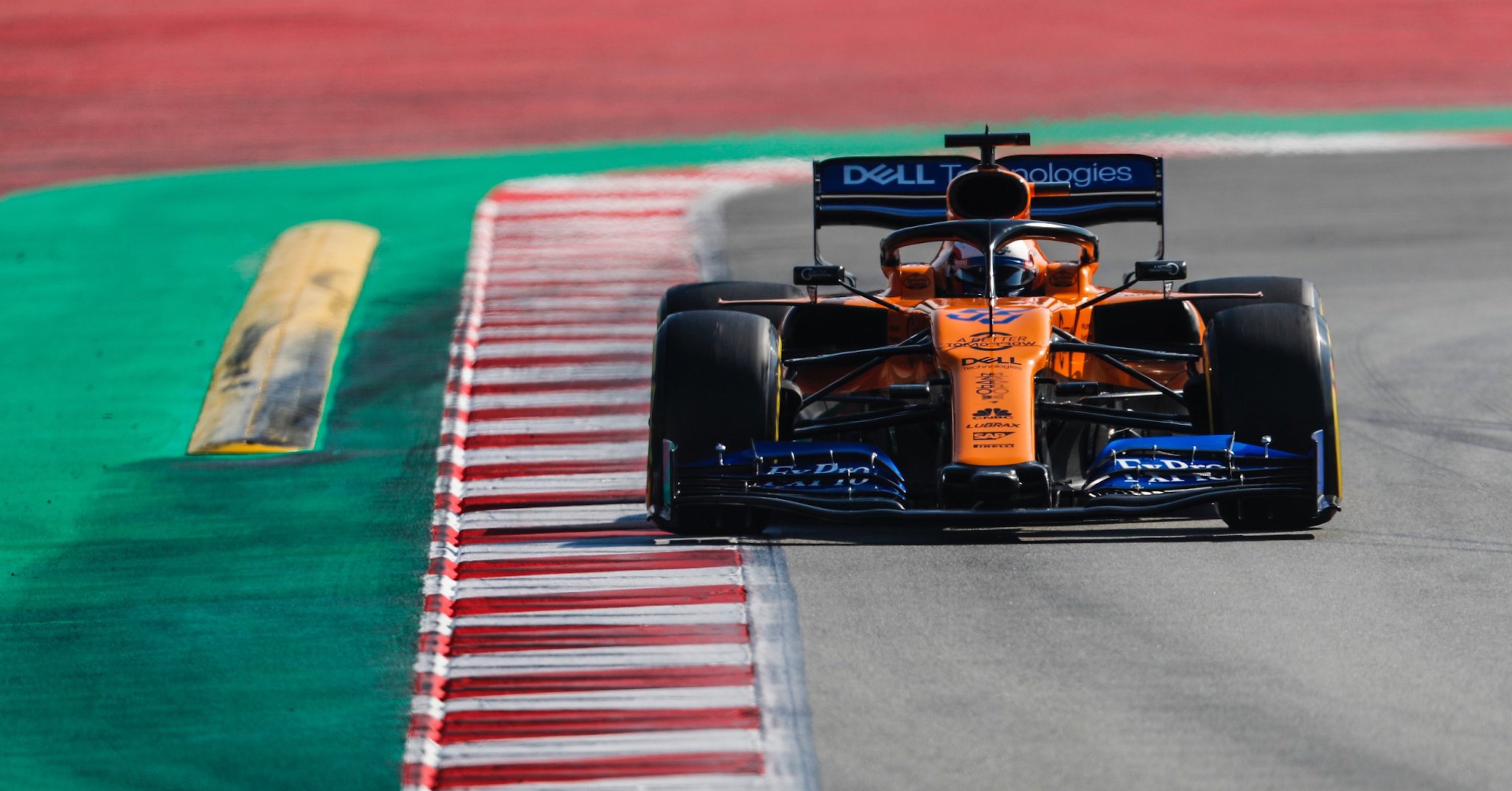
The only way is up for this famous team and McLaren might have taken its first steps to recovery through the winter, with the MCL34 putting in a creditable performance through testing. That is not to say it will be initially pressing the front of the midfield on pace. But the base performance of the car is there, where it has been lacking for many years and it will be up to the in-season development to see where it ends up in the final order come Abu Dhabi.
It’s long been a feature of McLaren’s testing schedule to complete a lot of runs with flow viz paint applied to the car’s aerodynamics surfaces. This fluorescent oil-based paint runs along the bodywork with the airflow and shows the team where the surface airflows are going. Photos of the resulting streaks can be directly compared to similar results in CFD or wind tunnel runs. This is just a single purpose test and McLaren also ran with arrays of aero rakes to map the off-surface air flows. Strong correlation between these on-track tests and simulation data will give McLaren confidence its aero programme is on track and future gains found in the wind tunnel will be seen on track.
Alfa Romeo Racing
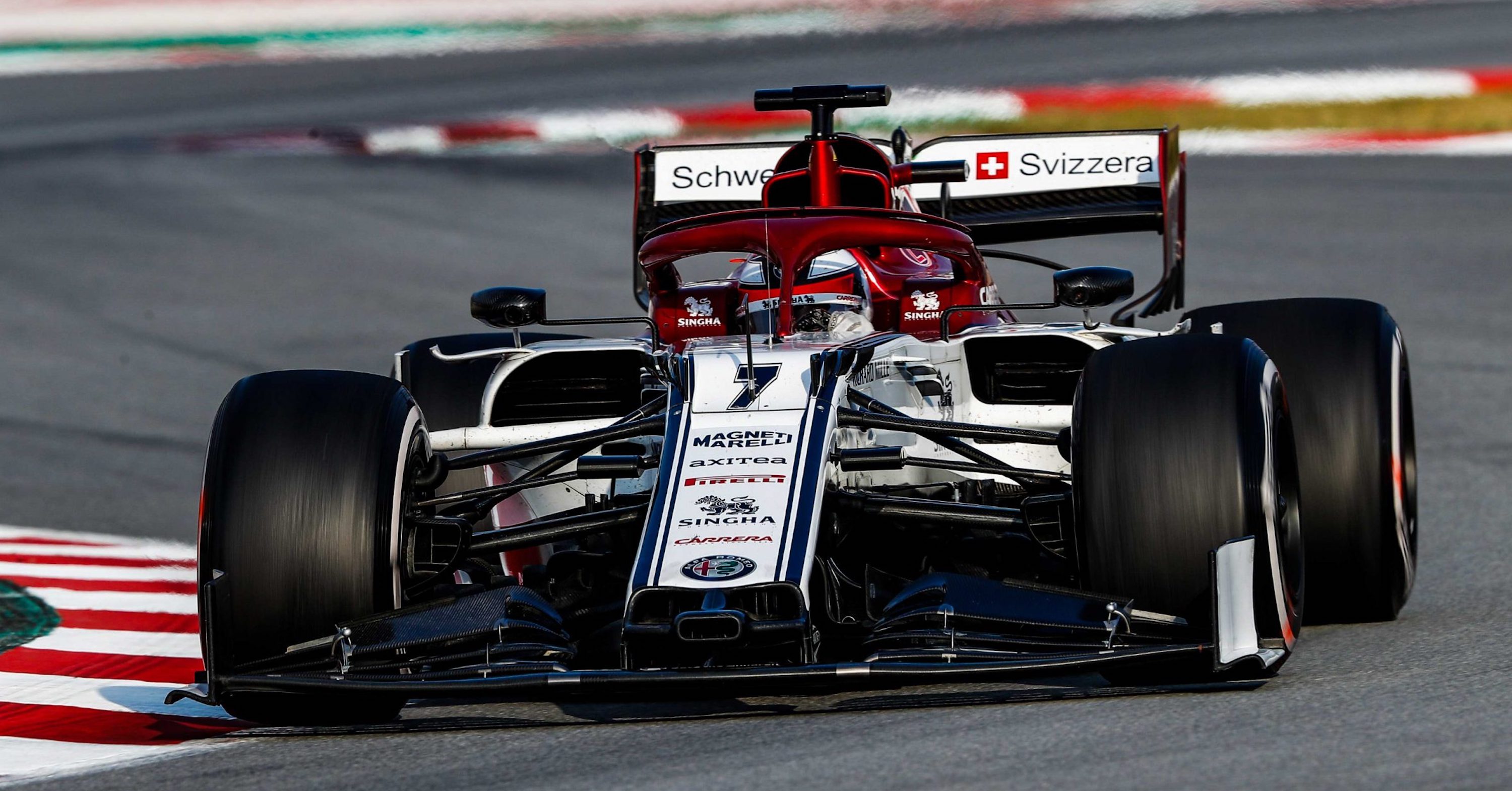
Even with its cutting-edge design, Alfa Romeo finds itself in a similar position to where Toro Rosso have been, in that the car should work well but lacks a bit of performance. In a middle of the midfield position, the C38 could evolve and show greater pace, hopefully finding this speed before its rivals mimic its better design ideas.
Unlike Ferrari and Haas the car did not switch to the two-pipe exhausts in the second test, most likely due to limitations in preparing the parts than any functional reasons. The car continued to play with the top engine cover design and T-wing, whilst the top of the chassis gained some innovative new vanes.
These vanes, like the Mercedes “L” vanes, sit in the area allowed for the monocoque’s footwell section. This can be 625mm high, but the intersection with the nosecone must be at 550mm, so these fins sit in the 75mm wedge shaped gap created as the chassis slopes to meet the nose. They take the rising airflow off the nose and turn it outwards and downwards along the side of the chassis, working with the downwash elements on the bargeboards and the sidepod’s undercut to direct the most airflow possible over the floor and the diffuser. These are useful devices, but are easy to copy, as they are a discrete and unloaded part, so they can be prototyped quickly from 3D printed materials and tested on the real car.
SportPesa Racing Point F1 Team
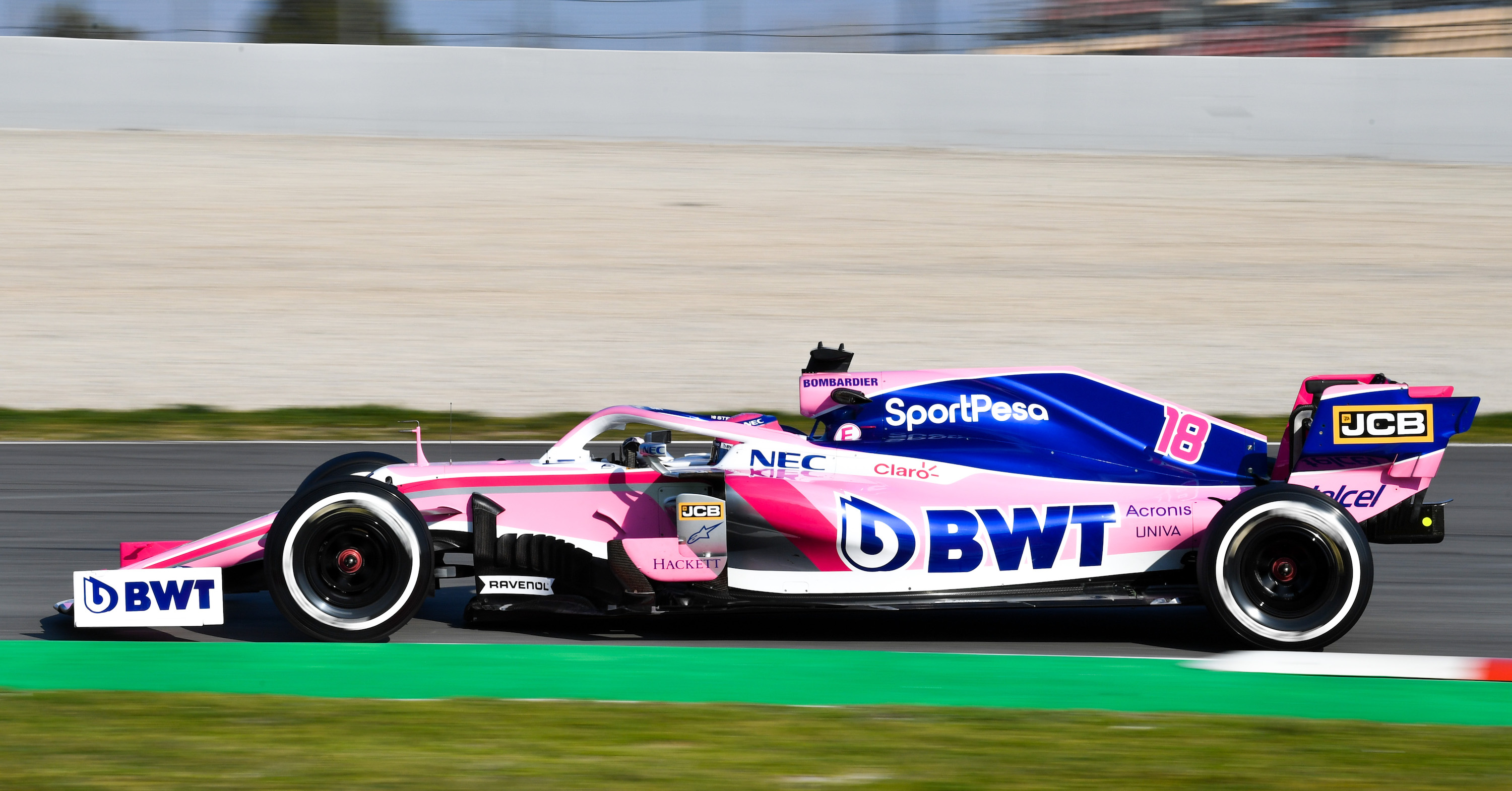
Awaiting the major Melbourne update, the Racing Point RP19 car continued to develop the under-the-skin updates and set up in the second week of testing. So, this test was more about gathering mileage, than performance. So the teams’ position on the lap charts needs to be understood in the right context.
The challenge now for the revitalised team is to get the new updates fitted on the car in order to gain mileage and data quickly during free practice for the Melbourne GP. In its previous incarnations, the Silverstone-based team has always proven to be able to fit major updates that immediately deliver. So, while the team is perhaps starting on the back foot, it can regain any lost ground quickly.
ROKiT Williams Racing
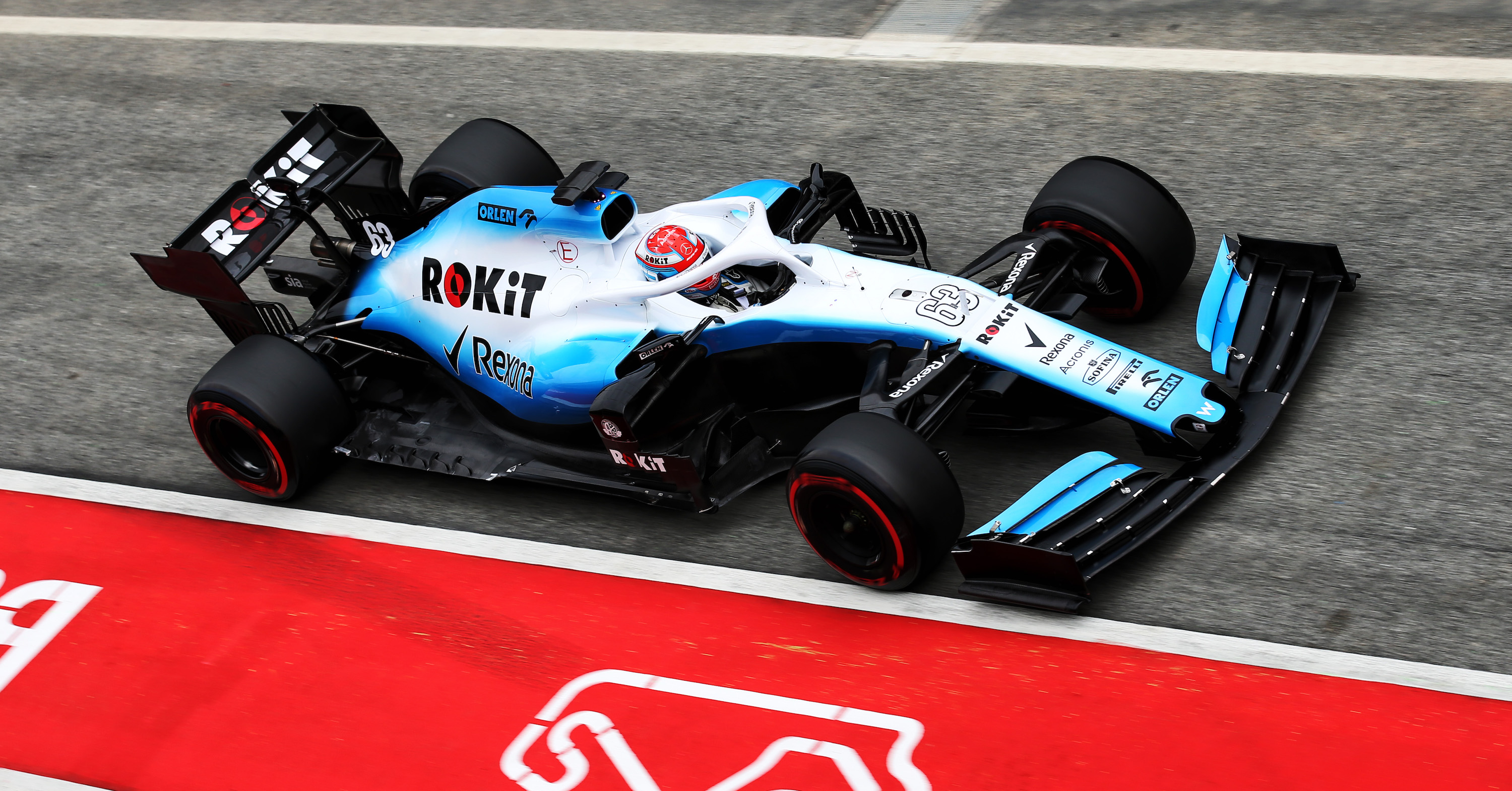
Formula One Testing, Day 3, Wednesday 20th February 2019. Barcelona, Spain.
The eight testing days proved to be a challenge for Williams this year. With the major regulation changes, the car was late and fast lap times weren’t forthcoming from the FW42, despite its handling being much more to the drivers’ liking than with its predecessor.
But again, the context in which the team were testing is an indicator of the run schedules. After suffering aero problems in 2018, the team need to be sure of the correlation between real life airflow and simulation. So, the test was largely focussed on data gathering, using aero rakes, flow viz and other sensor sets ups to measure the flow and loadings around the car. Without this baseline work being completed, Williams can’t be sure of the winter’s work being representative and future design work being predictable.
Through this work, new front wing parts were tested, similar in overall concept to the launch specification wing, that used a slimmed rearmost flap element. This being much shorter than the initial design, it largely looks to be less aggressive with the Y250 vortex and perhaps producing less downforce. This looks more like a track specific update for an upcoming race, than a change in overall the aero concept.

